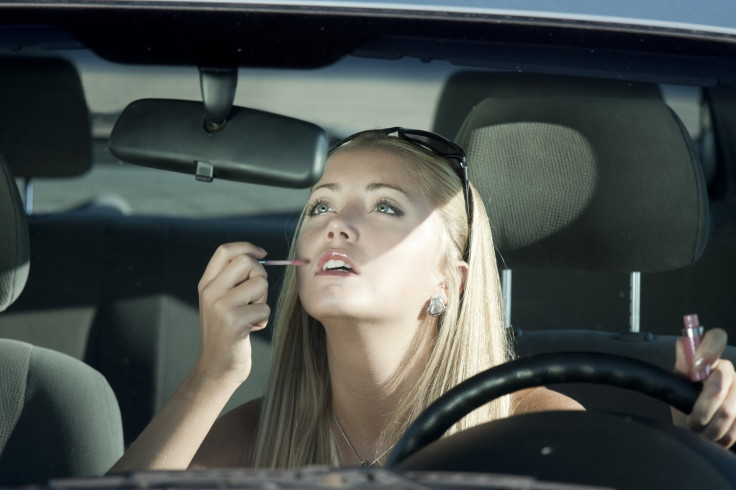Forget Texting And Driving, Teen Drivers Distract Themselves With Other Things Too

Teens, notoriously oblivious and adorably naïve, may have dropped the texting-while-driving habit to an extent, but their driving is still very much distracted, a new study finds.
While most people know that keeping their eyes on the road is the golden rule of driving, teens seem to have other things on their minds. Twenty-seven percent of teens reported that at some point in their short driving careers, they had changed clothes and shoes while driving, as well as put makeup on, changed contact lenses, and even done their homework. Meanwhile, those who reported texting while driving dropped from previous polls to 40 percent, Yahoo reported.
“Teens are busy, I guess,” lead author of the study David Hurwitz, an assistant professor of transportation engineering at Oregon State University, told NPR. But by far, he said the most interesting case of distracted driving came from one teen who played guitar while stuck in highway traffic.
The findings show that while educational campaigns targeting teens who text and drive have been relatively successful, teens are still too preoccupied with other things to responsibly take the wheel. According to the Centers for Disease Control and Prevention (CDC), teen drivers aged 16 to 19 are three times more likely to be in a fatal car crash than drivers aged 20 and older. In fact, seven teens die every day from injuries sustained in an accident.
“Previous research has demonstrated that any secondary task that results in glances away from the road for a duration of more than about two seconds has a dramatic effect on crash risk,” Hurwitz said.
For the study, the researchers enlisted 1,006 teens aged 14 to 18, and living in Washington, Idaho, or Oregon, to complete surveys both before and two weeks after a driver’s education class. Their goal was to determine what behaviors the teens partook in as well as what their perceptions of distracted driving were. During the driver’s ed class, the teens were given tasks that showed how distractions could affect them while driving — one of these involved writing down numbers while talking on the phone.
The researchers found that after the class, students were more likely to see distracted driving as a problem, and were capable of identifying risk factors too — older teens were also more likely to take the messages positively. The researchers hope the findings can help with developing more effective ways to spread awareness to teens. Still, Hurwitz says parents should be the first line of defense when it comes to driving responsibly.
“One thing that we should all be more cognizant of is that we are role models not just for our children, but for every passenger in our vehicle,” he said. “Exhibiting good behaviors for passengers in our vehicles is something that each of us can do to promote safe driving.”
Source: Hurwitz D, Miller E, Jannat M, et al. Improving teenage driver perceptions regarding the impact of distracted driving in the pacific northwest. Journal of Transportation Safety & Security. 2015.



























